Beans are a delightful addition to any vegetable garden, known for their versatility in the kitchen and ease of cultivation.
Whether you’re a seasoned gardener or a novice looking to explore the world of homegrown vegetables, growing and caring for beans can be a rewarding experience.
In this comprehensive guide, we’ll delve into the benefits of growing beans and explore some of my favorite bean varieties.
Benefits of Growing Beans
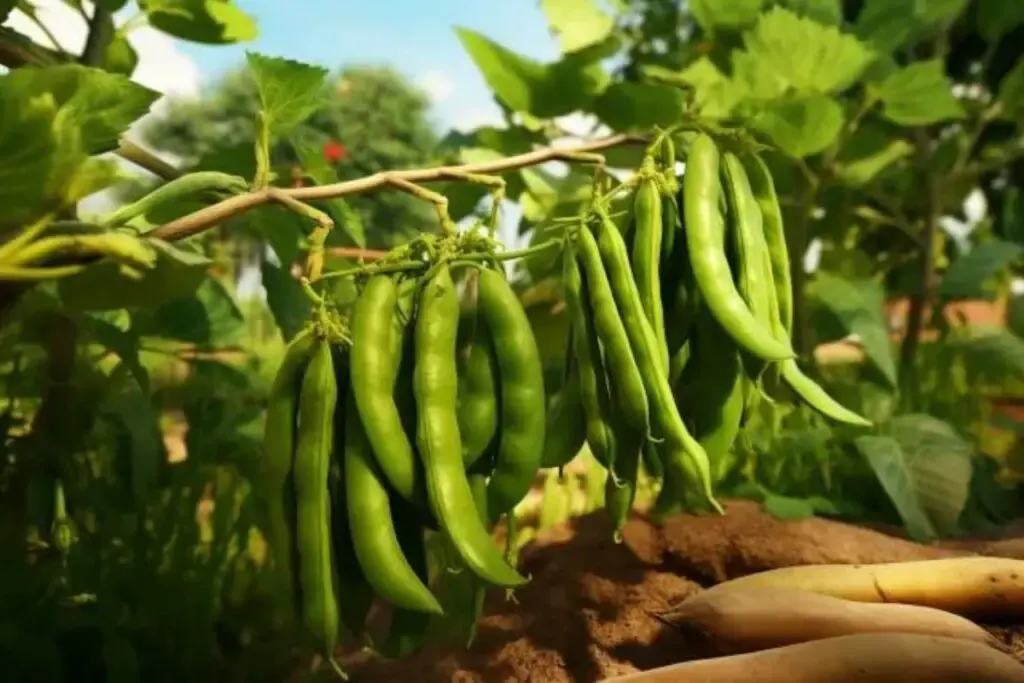
1. Nutritional Powerhouse
Beans are a nutritional powerhouse, packed with essential nutrients. They are an excellent source of plant-based protein, fiber, vitamins (such as folate and vitamin K), and minerals (like iron and potassium).
Incorporating beans into your diet can contribute to better overall health, aiding in weight management and reducing the risk of chronic diseases.
2. Soil Enrichment
Beans are nitrogen-fixing plants, which means they have a unique ability to convert atmospheric nitrogen into a form that can enrich the soil.
When you grow beans in your garden, they improve soil fertility by adding nitrogen. This benefits not only the beans themselves but also neighboring plants, making beans an ideal companion crop for many vegetables.
3. Sustainable Gardening
Beans are a sustainable choice for home gardeners. They require minimal water compared to many other crops, making them environmentally friendly.
Additionally, growing beans can reduce the need for synthetic fertilizers due to their nitrogen-fixing capabilities, promoting eco-friendly and cost-effective gardening practices.
My Favorite Bean Varieties
Now that we’ve explored the benefits of growing beans, let’s take a closer look at some of my favorite bean varieties. Beans come in various shapes, sizes, and colors, offering a range of options for your garden.
Here are three standout varieties:
1. Green Beans (Bush Beans)
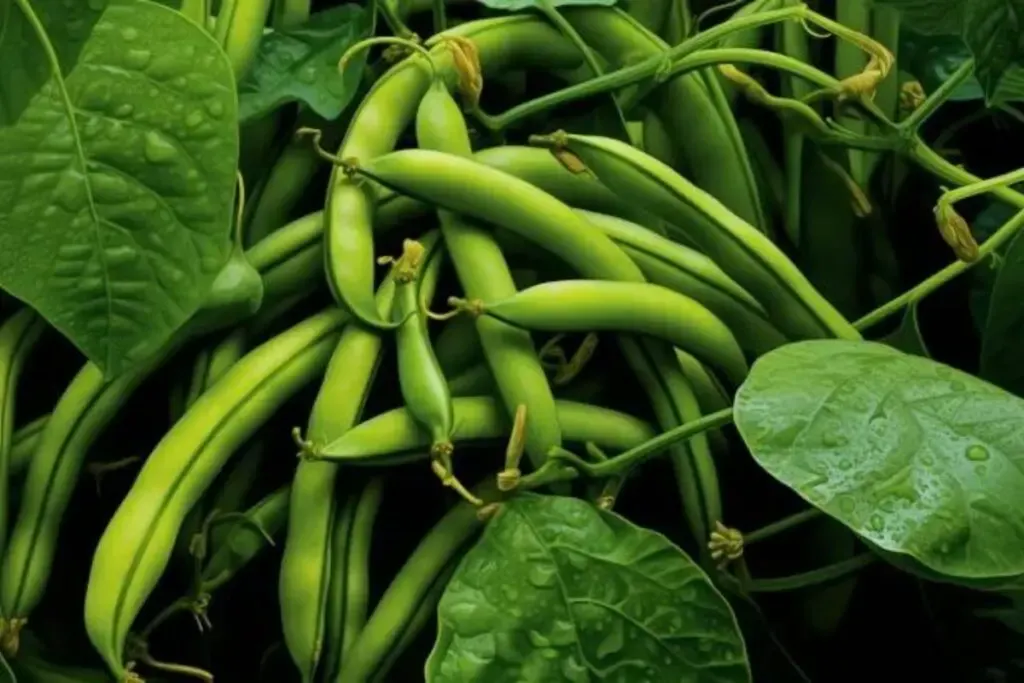
Green beans, also known as bush beans, are a popular choice for gardeners due to their compact growth habit.
These beans are easy to grow and produce crisp, tender pods that are perfect for fresh eating, canning, or freezing. Green beans come in both pole and bush varieties, with bush beans being the easiest for beginners.
2. Runner Beans (Pole Beans)
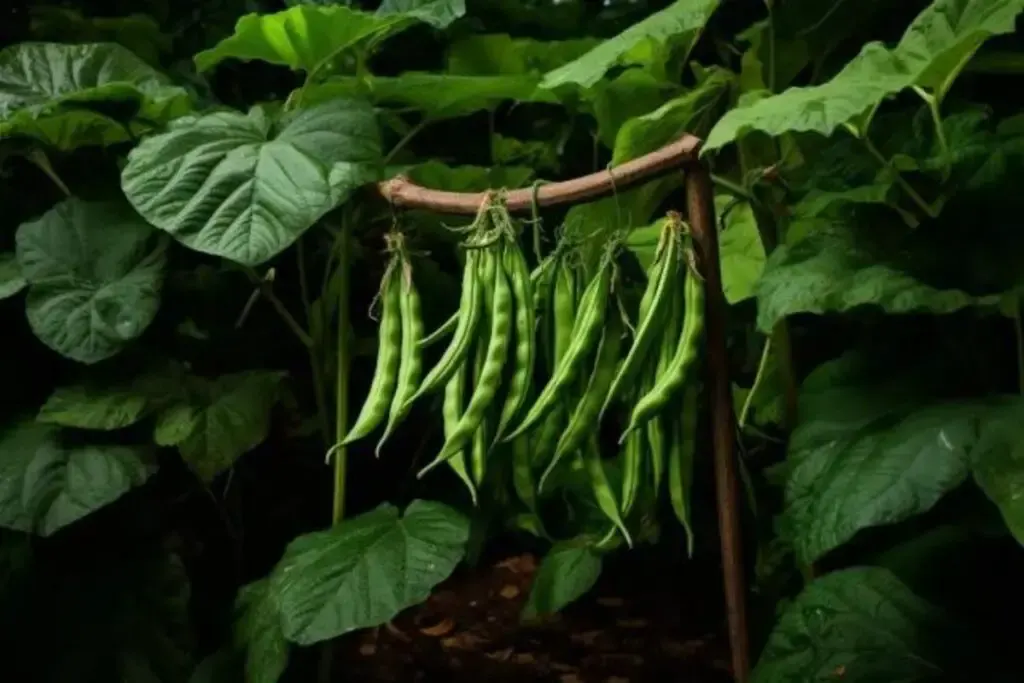
Runner beans are known for their vigorous growth and prolific production. These beans climb up trellises or support structures, making efficient use of vertical space in your garden.
With vibrant, scarlet flowers and long, flat pods, runner beans are not only productive but also visually appealing.
3. Lima Beans
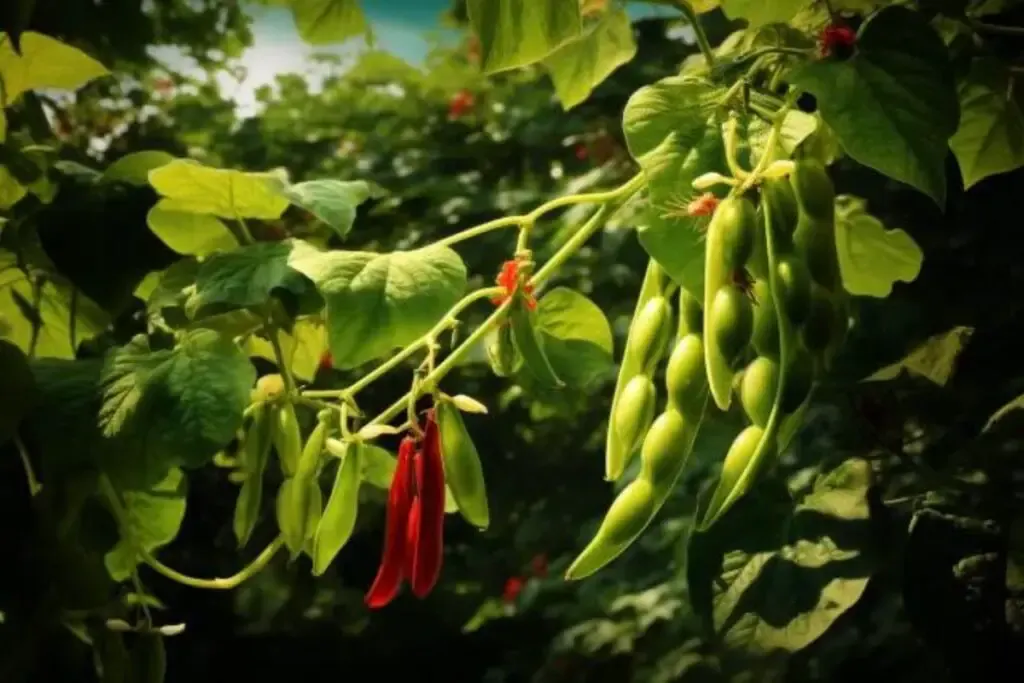
Lima beans, often referred to as butter beans, have a distinctive flavor and creamy texture. They come in two main types: bush and pole.
While they may take a bit longer to mature than some other bean varieties, the unique taste and versatility of lima beans make them well worth the wait.
Bean Care
Now that we’ve explored the benefits of growing beans and discovered some fantastic bean varieties, let’s dive into the essential aspects of caring for your bean plants.
Proper care ensures a bountiful harvest of these nutritious legumes, whether you’re growing bush beans, pole beans, or lima beans.
Planting
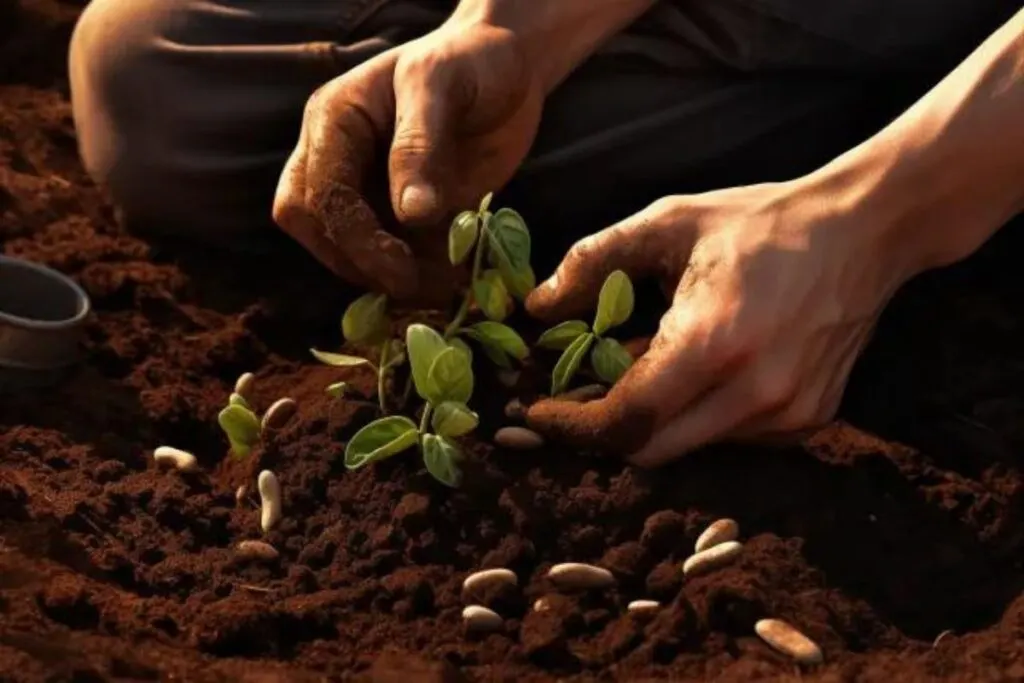
Planting beans is a straightforward process that starts with choosing the right location and timing. Plant your bean seeds or seedlings in a sunny spot with at least 6-8 hours of direct sunlight daily.
Beans thrive in warm soil, so wait until the soil temperature reaches around 60°F (15°C) before planting.
Sow the seeds at a depth of about 1 to 1.5 inches, spacing them 2-4 inches apart in rows or in hills for bush beans. For pole beans, provide sturdy trellises or supports for them to climb.
Light
Light is a crucial factor in bean growth and production. Beans thrive in full sunlight, so it’s essential to provide them with ample light exposure.
Ensure that your bean plants receive at least 6-8 hours of direct sunlight daily. If you’re growing beans indoors or in a partially shaded area, use reflective surfaces or grow lights to supplement natural light and promote healthy growth.
Soil
Beans are relatively adaptable when it comes to soil, but they do best in well-draining, loamy soil with a slightly acidic to neutral pH level (around 6.0 to 7.0).
Amending your soil with organic matter like compost can improve its fertility and water retention. Good soil preparation ensures that your bean plants have a solid foundation for healthy growth and efficient nutrient uptake.
Water
Consistent and adequate watering is essential for bean plants. Keep the soil consistently moist but not waterlogged, as excessive moisture can lead to root rot.
Water the beans at the base of the plants to prevent wetting the foliage, which can invite fungal diseases. In hot and dry climates, pay extra attention to watering to prevent drought stress, which can affect bean yield.
Temperature and Humidity
Beans thrive in warm temperatures, ideally between 70°F to 80°F (21°C to 27°C). They are sensitive to frost and cold temperatures, so it’s crucial to plant them after the last frost date in your area.
Beans are relatively adaptable to humidity levels, but maintaining moderate humidity can help prevent issues like powdery mildew.
Adequate spacing between plants promotes air circulation and reduces humidity-related problems.
Fertilizer
Beans are not heavy feeders, but they benefit from balanced nutrition. Incorporate a balanced, granular fertilizer into the soil before planting or use a water-soluble fertilizer during the growing season.
A general-purpose fertilizer with a balanced N-P-K ratio, such as 10-10-10 or 14-14-14, will provide the necessary nutrients for healthy bean growth. Be cautious not to over-fertilize, as excessive nitrogen can lead to lush foliage but reduced bean production.
Harvesting Beans
Harvesting beans is a satisfying culmination of your gardening efforts. These versatile legumes can be enjoyed fresh, canned, or frozen, making them a valuable addition to any home garden.
Proper harvesting techniques not only ensure a flavorful and tender crop but also encourage continuous bean production. To harvest beans, gently grasp the pod and snap it off the plant.
For best results, pick beans while they are still young and tender before the seeds inside fully mature. Frequent harvesting promotes new flower production, extending your bean harvest throughout the season.
Pruning
Pruning bean plants can help manage their growth and enhance overall productivity. While beans typically require less pruning compared to other crops, here are three key pruning tips to consider:
- Remove Dead or Diseased Leaves: Regularly inspect your bean plants and remove any dead or diseased leaves. This not only improves air circulation but also reduces the risk of fungal diseases, ensuring healthier bean plants.
- Pinch Back Long Stems: If your pole bean plants become overly long and start to droop, consider pinching back the growing tips. This encourages lateral branching and helps the plants stay more compact and upright.
- Harvest Promptly: As mentioned earlier, frequent harvesting can be a form of pruning. Be sure to pick beans regularly when they reach the desired size to encourage the development of new pods. This prevents the plant from diverting energy into seed production and promotes a longer harvest season.
Propagating
Propagating beans is relatively straightforward, as they can be grown easily from seeds. To save seeds for future planting, allow some bean pods to fully mature and dry on the plant.
Once the pods have turned brown and crisp, harvest the dried beans inside. Store them in a cool, dry place until you’re ready to plant them next season.
Alternatively, you can purchase fresh bean seeds from a reputable source for the following growing season.
How to Grow Beans From Seed
Growing beans from seed is a simple and rewarding process. Here are the basic steps to get you started:
- Seed Selection: Choose high-quality bean seeds that are suited to your growing region and preferences. Beans come in various types, including bush beans, pole beans, and different varieties such as green beans or lima beans.
- Planting: Plant bean seeds directly into the garden or containers once the soil has warmed to around 60°F (15°C). Sow the seeds at a depth of about 1 to 1.5 inches and space them according to the recommended guidelines for the specific bean variety you’re growing.
- Watering: Keep the soil consistently moist but not waterlogged. Watering at the base of the plants is ideal to prevent fungal issues.
- Support (for pole beans): If growing pole beans, provide sturdy trellises or supports for them to climb as they grow.
- Harvesting: Begin harvesting beans when they reach the desired size and are still tender. Frequent harvesting promotes more flower production and a longer harvest season.
Growing in Pots
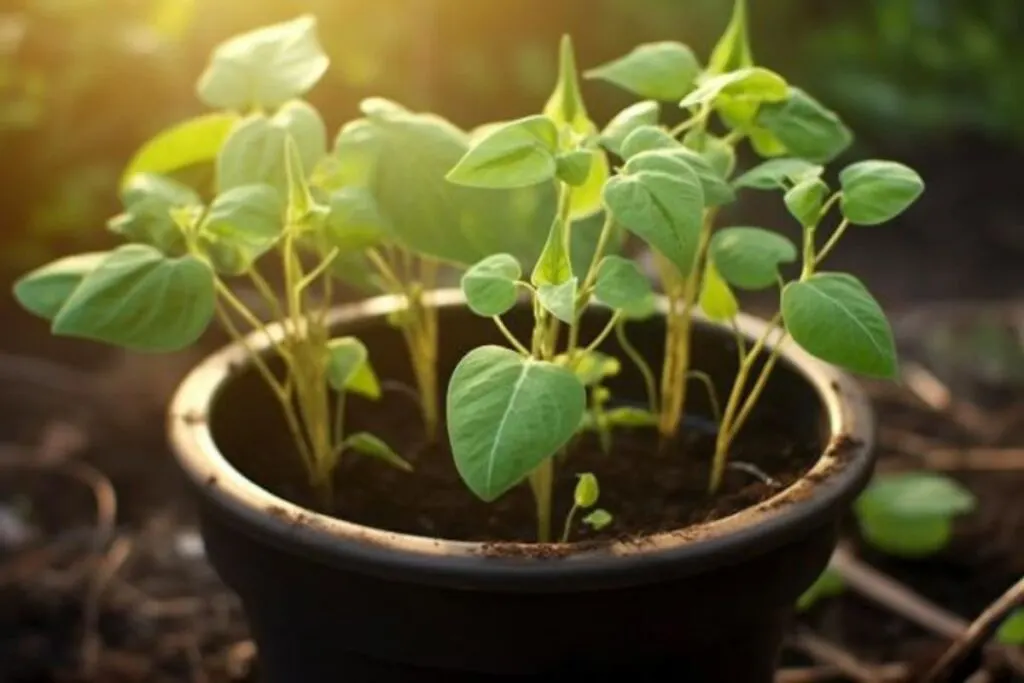
Growing beans in pots is an excellent option for those with limited garden space or those who want to enjoy fresh beans on a patio or balcony.
Choose a large container with good drainage and fill it with a well-draining potting mix. Plant the beans at the recommended spacing and provide them with ample sunlight.
Consider using a trellis or support for pole beans. With proper care and regular harvesting, container-grown beans can thrive and provide a tasty addition to your meals.
Overwintering
Overwintering beans is not a common practice, as these warm-season crops are typically grown during the frost-free months.
However, if you live in a mild climate or want to experiment with extending the bean-growing season, you can protect your bean plants from frost by covering them with row covers or cloths on chilly nights.
Be sure to provide adequate support for the covers to prevent damage to the plants. Additionally, you can consider growing cold-tolerant bean varieties specifically suited to cooler temperatures. While it’s a bit unconventional, successful overwintering can yield fresh beans even when the weather turns chilly.
Transplanting
location or if you started them indoors and need to transfer them to your garden. To transplant beans, choose a sunny spot with well-draining soil, and make sure the soil temperature has warmed sufficiently.
Gently remove the bean plants from their original containers or garden beds, being careful not to disturb the roots. Dig holes in the new location and plant the beans at the same depth they were previously.
Water thoroughly after transplanting to help the plants establish themselves. Transplanting beans allows you to optimize growing conditions and spacing for a successful bean harvest.
Common Pests & Diseases
While beans are relatively hardy, they can still face a few common pests and diseases that gardeners should be aware of:
Pests
- Aphids: These small insects can cluster on bean plants, sucking sap from the leaves. Use a strong stream of water or insecticidal soap to remove aphids.
- Mexican Bean Beetles: These beetles can defoliate bean plants. Handpick the beetles and their larvae, or use neem oil as a deterrent.
Diseases
- Powdery Mildew: A common fungal disease, powdery mildew appears as a white, powdery substance on the leaves. Improve air circulation and avoid overhead watering to prevent it.
- Bean Rust: Bean rust presents as rust-colored pustules on bean leaves. Remove infected leaves promptly and consider using a copper-based fungicide.
Maintaining good garden hygiene, providing proper spacing, and avoiding overwatering can help prevent pest and disease issues.
Additionally, selecting disease-resistant bean varieties can be a proactive approach to ensure a healthy harvest. By staying vigilant and addressing problems promptly, you can enjoy a thriving bean garden.
Whether you’re considering overwintering, transplanting, or managing common pests and diseases, beans are a versatile and resilient crop that can thrive in your garden with proper care.
Happy gardening, and may your bean harvest be abundant and delicious!

